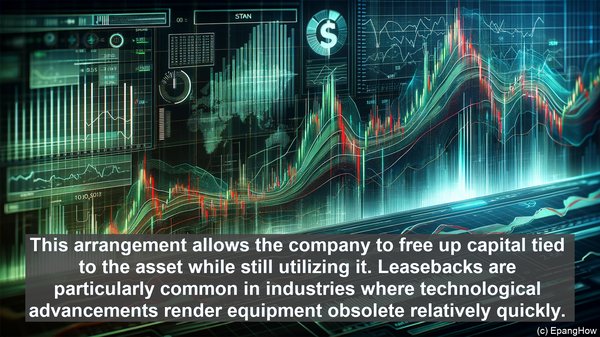Introduction: The World of Leases
Hello and welcome! Leases are an integral part of the financial landscape, facilitating the use of assets without outright ownership. Today, we’ll delve into two specific types: financial leases and leasebacks. While they share similarities, they possess distinct features that set them apart.
Financial Leases: A Deep Dive
Let’s start with financial leases. In this arrangement, a lessee obtains an asset from a lessor for an extended period, often encompassing the majority of the asset’s useful life. The lessee is responsible for maintenance, insurance, and other associated costs. Importantly, the lessee also assumes the risks and rewards of ownership, making this lease akin to a purchase in many ways. Due to its long-term nature, financial leases are often employed for high-value assets like machinery or vehicles.
Leasebacks: A Unique Perspective
Now, let’s shift our focus to leasebacks. In a leaseback, the original owner of an asset, often a company, sells it to a lessor and simultaneously leases it back. This arrangement allows the company to free up capital tied to the asset while still utilizing it. Leasebacks are particularly common in industries where technological advancements render equipment obsolete relatively quickly. By engaging in a leaseback, companies can stay at the forefront of innovation without significant upfront investments.
Key Differences: Ownership, Costs, and More
When comparing financial leases and leasebacks, one of the primary distinctions lies in ownership. In a financial lease, the lessee assumes ownership-like responsibilities, while in a leaseback, the lessor retains ownership. Additionally, the costs associated with each type differ. In a financial lease, the lessee bears the expenses, whereas in a leaseback, the lessor typically covers maintenance and other costs. The duration of the agreements also varies, with financial leases often spanning several years, while leasebacks can be shorter-term.

Applications and Considerations
Both financial leases and leasebacks offer unique advantages. Financial leases provide the lessee with the benefits of ownership, such as potential tax advantages, while leasebacks enable companies to access capital tied to assets. When deciding between the two, factors like the asset’s lifespan, the lessee’s financial situation, and the lessor’s objectives come into play. Consulting with financial professionals is crucial to make informed decisions in these scenarios.

